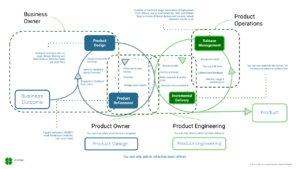Even when we set the right priorities, execution can still falter. Bottlenecks creep in, handoffs drag timelines out, ownership gets murky, and processes seem to work against us instead of for us. Before long, projects are delayed, costs are soaring, and frustrations are running high.
But here’s the thing: prolonged delivery timelines aren’t just an execution problem—they’re a portfolio design problem.
When we think about Portfolio Design, we’re not just choosing what to work on. We’re structuring how work gets done across the organization. Streamlining execution is a core part of that structure. It’s about intentionally designing a portfolio that enables delivery, not just activity. When we do it well, we eliminate friction, clear the path for teams, and dramatically accelerate outcomes.
Let’s dig into how you can streamline your execution like a pro.
Why Execution Breaks Down
If your organization struggles with delivery, you’re not alone. Some familiar signs include:
- Bottlenecks that slow down progress and create long queues.
- Handoffs that introduce delays, errors, and miscommunication.
- Unclear ownership of tasks, leading to confusion and inaction.
- Misaligned processes that add complexity rather than removing it.
- Delivery timelines that keep slipping, frustrating both teams and stakeholders.
- Soaring delivery expenses as inefficiencies pile up.
These aren’t isolated problems. They’re symptoms of deeper issues in how the portfolio is designed. When work is fragmented, misaligned, or overloaded from the start, even the best teams will struggle to deliver.
Execution challenges are often portfolio design challenges in disguise.
Designing for Streamlined Execution
The good news? If we design the portfolio with delivery in mind, we can create a system that flows naturally and consistently. Here’s how:
1. Select Work That Fits Team Capacity
It sounds simple, but it’s easy to miss: teams can only do so much at once. When we overload them with too much work in progress (WIP), we stall momentum and dilute focus.
“The Problem with Too Much Work in Progress” teaches us that WIP is a silent killer—it keeps teams busy but not effective. Limiting WIP ensures that teams can finish what they start, leading to faster results and higher quality.
Portfolio Design isn’t just about choosing important work—it’s about pacing it so that teams can actually deliver.
2. Organize Around Value Streams
Value streams are the natural flow of work from idea to customer impact. When we organize portfolios around value streams, we align teams to outcomes instead of silos.
Mapping value streams reveals hidden bottlenecks, redundant steps, and unnecessary handoffs—the same obstacles that cause the “spinning wheels” effect many organizations feel. When teams are structured around the flow of value, they move faster and more smoothly.
3. Remove Unnecessary Dependencies
Cross-team dependencies are one of the biggest sources of delay and complexity. Every time one team is waiting on another, momentum stalls.
Portfolio Design aims to minimize dependencies wherever possible. By structuring work and teams so they can operate with greater autonomy, we create an environment where progress doesn’t constantly get stuck in traffic.
As we saw in “Delivery Delays,” big programs often collapse under the weight of tangled dependencies. A clean design simplifies execution.
4. Establish Clear Roles and Accountabilities
Unclear ownership is a quiet saboteur of progress. When no one knows exactly who is responsible for what, decisions get delayed, issues get dropped, and confusion reigns.
Streamlined portfolios establish clear roles and accountabilities from the outset. Everyone knows what they own, what they’re supporting, and where they fit in the bigger picture. Clear ownership fuels faster, more confident execution.
Enable Flow, Not Just Activity
Busy teams don’t always deliver better outcomes. Real progress comes from creating flow—a steady, unblocked movement of valuable work from start to finish.
To build flow into your portfolio:
- Visualize work: Make progress visible so you can spot bottlenecks early.
- Improve communication: Avoid misunderstandings and reduce the friction between teams.
- Empower teams: Let them manage their own work and make decisions close to the action.
- Deliver iteratively: Break work into small, valuable pieces and adapt based on feedback.
When we can’t see progress, risks pile up unnoticed—the danger of “Invisible Progress.” Good flow keeps everything visible, actionable, and moving forward.
The Payoff of Streamlined Execution
When you design your portfolio with streamlined execution in mind, the results speak for themselves:
- Shorter delivery timelines—projects actually finish on schedule.
- Lower delivery costs—less rework, fewer delays, tighter focus.
- Happier teams—less frustration, more pride in results.
- Greater adaptability—teams can pivot faster when change hits.
- Higher stakeholder satisfaction—more predictable, more valuable outcomes.
In short, streamlined execution builds momentum—and momentum builds success.
Final Thoughts
Streamlining execution isn’t just about working harder—it’s about designing smarter. By carefully structuring your portfolio around capacity, value streams, and clear ownership, you create a system that flows naturally and delivers reliably.
Portfolio Design is about creating the conditions for success, not just hoping for it.
If you want to move beyond activity and start delivering real impact, start by streamlining your execution like a pro.
Stay tuned: In our next articles, we’ll examine how designing for adaptability prepares your portfolio—and your organization—for whatever the future holds.




